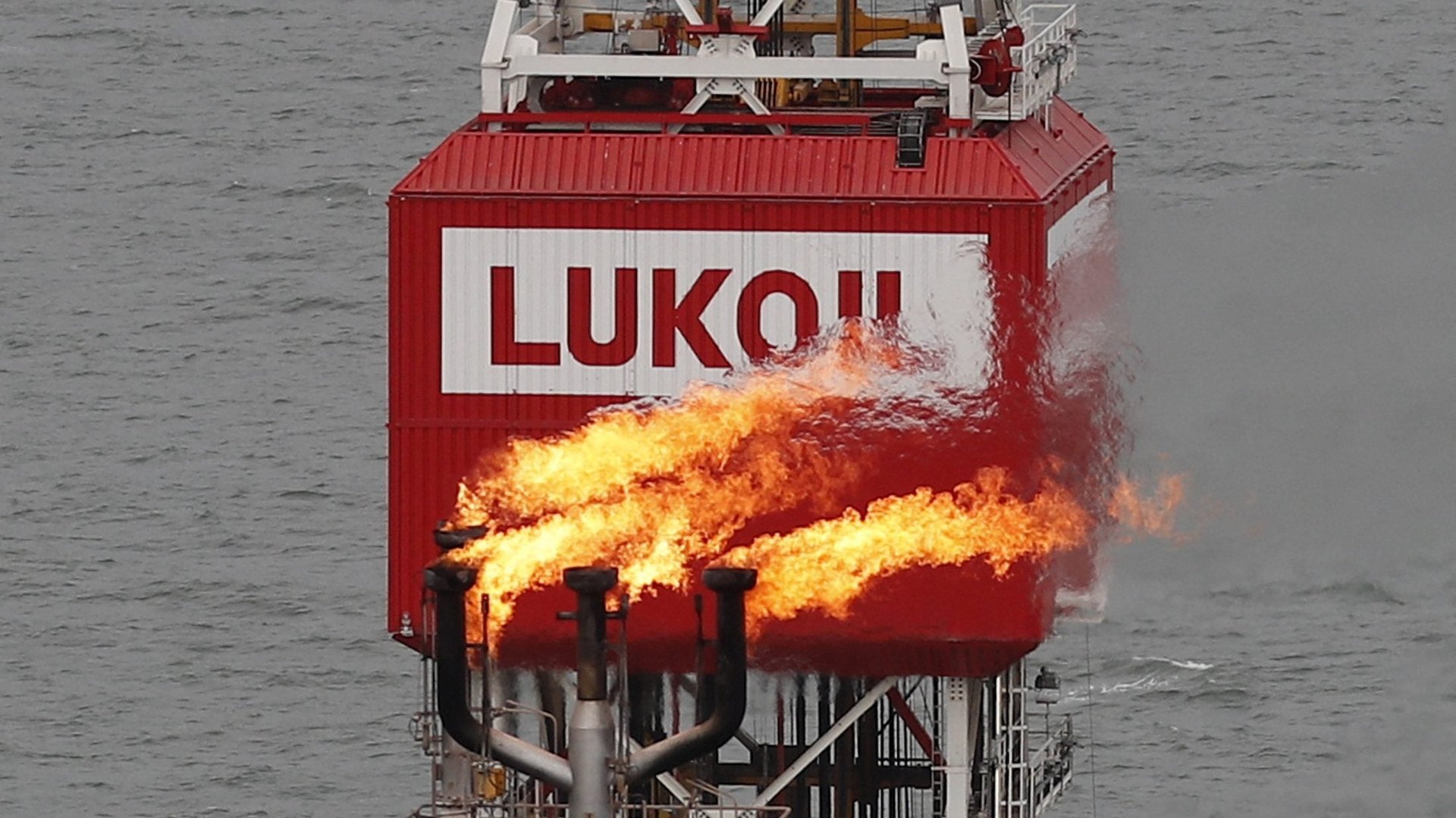The Ukraine invasion shows that banks can fix their climate problem
Within days of the invasion of Ukraine, numerous Western oil and gas majors said they would cut business ties with their peers in Russia. That decision wasn’t cheap: BP may write down as much as $25 billion in Russia-based assets. But it turns out that when moral and political pressure makes an asset sufficiently toxic, the biggest companies in the global energy system can quickly drop it.


Within days of the invasion of Ukraine, numerous Western oil and gas majors said they would cut business ties with their peers in Russia. That decision wasn’t cheap: BP may write down as much as $25 billion in Russia-based assets. But it turns out that when moral and political pressure makes an asset sufficiently toxic, the biggest companies in the global energy system can quickly drop it.
Climate change may move more slowly than the Russian army, but the global movement to counter it poses an even bigger threat to fossil fuel reserves that remain on companies’ books—if governments achieve their decarbonization goals, those reserves will never be dug or drilled up.
This so-called “carbon bubble” isn’t just a risk for oil companies, but also for banks that finance them. But banks move slowly. Western financial institutions like Citigroup and Blackrock are some of the biggest private investors in Russian oil and gas companies, and only a few have begun to cut ties to Russia. And although many banks have made long-term commitments to eliminate emissions from their portfolios, the biggest fossil financiers remain reluctant to drop their carbon-intensive clients, citing the need to give them more time and support to transition.
The Ukraine crisis has proved that faster action is possible. “It should be an incredible lesson for the finance sector that you can do anything you want to do,” said Ivan Frishberg, chief sustainability officer at New York-based Amalgamated Bank. “You can absolutely divest.” Frishberg’s bank is already there.
A growing number of banks won’t touch fossil fuels
Amalgamated is among a handful of US and European banks whose portfolios are certified as fossil-fuel free under a new initiative by the UK advocacy group Bank.Green. The group’s director, Zak Gottlieb, said its goal is to help fossil-free banks poach climate-conscious retail banking customers from mainstream banks, and to demonstrate that banks don’t need fossil fuels to operate successfully.
So far, the banks in the initiative have an advantage over their larger peers, in that they had few, if any, fossil fuel clients to begin with. But executives of several fossil-free banks said their theory of change is that even a relatively small migration of customers away from mainstream banks will significantly escalate pressure on them to strengthen and accelerate their climate goals. That could raise the cost of capital for fossil fuel companies, and deflate the carbon bubble.
“We’re trying to create competitive pressure around the big banks, and our hope is that we certainly bring on some recovered fossil fuel addicts,” Gottlieb said. “The more banks we can get to join this, the more we can isolate the ones that are the biggest polluters.”
Most big banks are still reluctant to drop oil and gas
For most major banks, fossil fuels account for 7-10% of the portfolio, Gottlieb said. Oil and gas are hard for large banks to avoid because they still account for a large share of the global economy, and for now tend to be lucrative investments. But they could turn into a liability if oil and gas assets get stranded by climate policy. Meanwhile, the climate damage caused by those investments poses threats to other parts of a bank’s portfolio, like agriculture and real estate.
The trouble is, most bank executives operate on a time horizon of just a few years. In the absence of an immediate crisis—a war in Europe, for example—as long as oil and gas companies turn profits (as they did in record fashion in 2021), the near-term benefit will outweigh the long-term portfolio risk, Frishberg said. But the abrupt evacuation of Western capital from Russia will be painful for companies and the economy in general; rather than wait for the climate bubble to burst, Frishberg said, banks should be more proactive now about mitigating their exposure to assets that are likely to become high-risk in the future.
For small banks, that task is generally easier—they’re not equipped to offer multimillion-dollar loans of the size most oil and gas companies require. But midsized banks have both more opportunities to take fossil clients, and to avoid them. And banks of all sizes can decrease fossil fuel demand by increasing funding for renewables and energy efficiency. Many of the banks in the Bank.Green initiative have turned loans for the clean energy sector into a core offering. Identifying low-carbon investment opportunities is about to become easier, too, as the US Securities and Exchange Commission finalizes new rules that will require all public companies to disclose their carbon footprint.
“With greater size comes a need for greater diligence,” Frishberg said. “Banks put restrictions on their use of funds all the time. When are they going to limit the types of activities that we know are inconsistent with a net-zero future?”